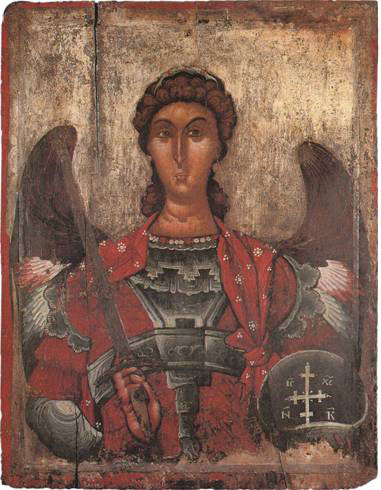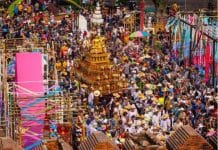This exhibition offers an itinerary through Albania’s historical heritage from prehistory to 17th century making us rediscover the European components of some of the civilisations settled on the eastern coast of the Adriatic sea.
The exhibition is endorsed by the Ministry of Foreign Affairs and the Ministry of Tourism, Culture, Youth and Sport of the Albanian Republic with the Embassy of Albanian Republic in Italy, and sponsored by the Italian Ministry of Foreign Affairs, in cooperation with the Ministry for Cultural Heritage and Activities and the City of Turin.
Like the great historians from the Annales have taught us, many of the places we have perceived since the 20th century as boundaries and political borders between nations, have been for centuries meeting points at the crossroads of different civilisations, breeding new cultures arisen from the medley of languages, traditions, ideas.
We must bear this in mind that when today we think of the Mediterranean and that narrow stretch of sea extending between the Italian eastern coast and the Balkan peninsula, the Adriatic, once a direct connection with Albanian and Greek coasts, a bridge toward the great eastern civilisations.
The 150 works gathered in this exhibition “Treasures from Albanian Heritage”, organised on the 100th anniversary of Albanian Independence (1912), tell a thousand-year old story of the settling and transformation of a people’s culture, which is rooted in the prehistoric age, then opened to Greek-Hellenistic influences, to those of Imperial Rome and which, in the Middle Ages, welcomed the signs of civilisation of Italian communes, until it fell under the influence of the Ottoman Empire (1479).
The traces of this long historical thread are documented by archaeological remains of everyday use (pottery, sculpture, bronzes, jewellery) and ritual objects (like a shining group of icons) ranging from the Neolithic to the 18th century of our age allowing us to ideally picture even the common destiny of peoples on the other side of the Adriatic, in that peninsula we nowadays call Italy.
If this exhibition is, on one hand, a chance to rediscover Albania’s European roots, on the other hand, it is intended to draw attention to the ancient and deep relationship with Italy, for centuries interacting and cooperating with Albania and welcoming its migrating community.
The exhibition display, chronologically ordered and curated by professor Apollon Baçe, Director of the Albanian Institute of Monuments, starts from Prehistory, with pottery, jewellery, weapons, statues from Ancient Neolithic, Bronze Age, Iron Age and from the archaic period; vases, artifacts, statues, portraits, coins, storied stones illustrate Antiquity, from Hellenistic and Roman times, up to Early Middle Ages. Much of this treasure was brought to light thanks to the research and excavation of Albanian and European archaeologists, including some Italians, like Luigi Ugolini (1895–1936).
The display finally ends with the Byzantine age presenting to the public a selection of objects of Byzantine liturgy dating from 12th to 18th century: although following fixed figurative patterns, the icons here exhibited show the reception of Trecento Italian painting and the changes made by Master Onufri and his school, confirming the utmost permeability of Albanian culture.
The catalogue, published by Gangemi Editore, is edited by Apollon Baçe, Director of the Albanian Institute of Monuments, together with Shpresa Gjongecaj from the Albanian Institute of Archaeology and Neritan Ceka, archaeologist and Advisor to the Prime Minister for Culture and the Albanian National Trust, under the supervision and directorship of Alessandro Nicosia. The catalogue, other than an unpublished study by Apollon Baçe on Byzantine icons, includes essays by Neritan Ceka, Shpresa Gjongecaj and Sandro De Maria.
THE EXHIBITION SECTIONS:
Prehistory
From Neolithic (6th millennium BC) to Archaic Age (7th – 6th century BC) through bronze and iron civilisation: the works on display show the development of a civilisation with important relations towards the Aegean and the Italic peninsula.
Illyrian Kingdoms and Greek Colonies
The founding of the first towns, the relations with cities in Greece and Magna-Graecia, up to the fine creations of the Hellenistic time.
Roman Age
From the Roman domination to the wake of the Middle Ages through jewellery, stone sculptures, decorative elements and examples of funerary art marking the steps of a gradual change from Greek-Roman classical mimetic art to Mediaeval symbolism.
Byzantine Art
The development of sacred art from 12th to 18th century through the creation of Onufri Master who in full 16th century renewed the icons pictorial tradition taken from Italian Trecento; there is also on display embroidered hanging from Gllavenica, a precious document of devotion and artistic mastery.
- Exposition du 24 janvier au 7 avril 2013
Le Palazzo Madama
Le Palazzo Madama abrite les collections du Musée Municipal d’Art Antique. De ce fait, la visite comprend deux parcours qui se croisent : l’un consacré à l’histoire des espaces, l’autre au sens des oeuvres d’art que ceux-ci abritent. Les parcours se déroulent sur quatre étages, en une espèce d’itinéraire à travers le temps : au soussol, au niveau des fondations romaines, le Lapidaire Médiéval, avec des sculptures en pierre et des orfèvreries ; au rez-de-chaussée, où se trouvent les témoignages les plus nombreux du château du Quinzième siècle, l’art du Moyen Age à la Renaissance ; dans la Torre Tesori (Tour Trésors), le Ritratto d’uomo (Portrait d’homme) de Antonello da Messina. Au premier étage, dans les salles baroques, l’art du Dix-septième et du Dix-huitième siècle, avec la galerie de tableaux, les meubles de Piffetti et de Prinotto et les fastueuses décorations des salles. Enfin, au deuxième étage, les Arts Décoratifs de toutes les époques : céramiques, ivoires, orfèvreries, tissus, verres… Le Musée a été créé en 1861 par la Ville de Turin pour rassembles et conserver le patrimoine de la région ; raison pour laquelle la plupart des oeuvres conservées au Palazzo Madama proviennent du Piémont ou de régions limitrophes. Vous y trouverez des travaux d’artistes et de grands artisans, qui vous aideront à comprendre quels étaient alors la culture et le goût d’une région alpine et de frontière gouvernée, pendant six siècles, par la Maison de Savoie. Toutefois, un autre souffle anime ce Musée, le souffle lié à ses grands chefs-d’oeuvre (lien) et le souffle qui s’inspire des grands musées étrangers d’art décoratif ; les immenses collections de cet étage ont été conçues par les premiers directeurs de ce musée comme répertoire de modèles pour les artisans piémontais et forment, aujourd’hui, l’une des plus grandes collections italiennes d’art appliqué.
Palazzo Madama
- Piazza Castello, Turin
- www.palazzomadamatorino.it



















